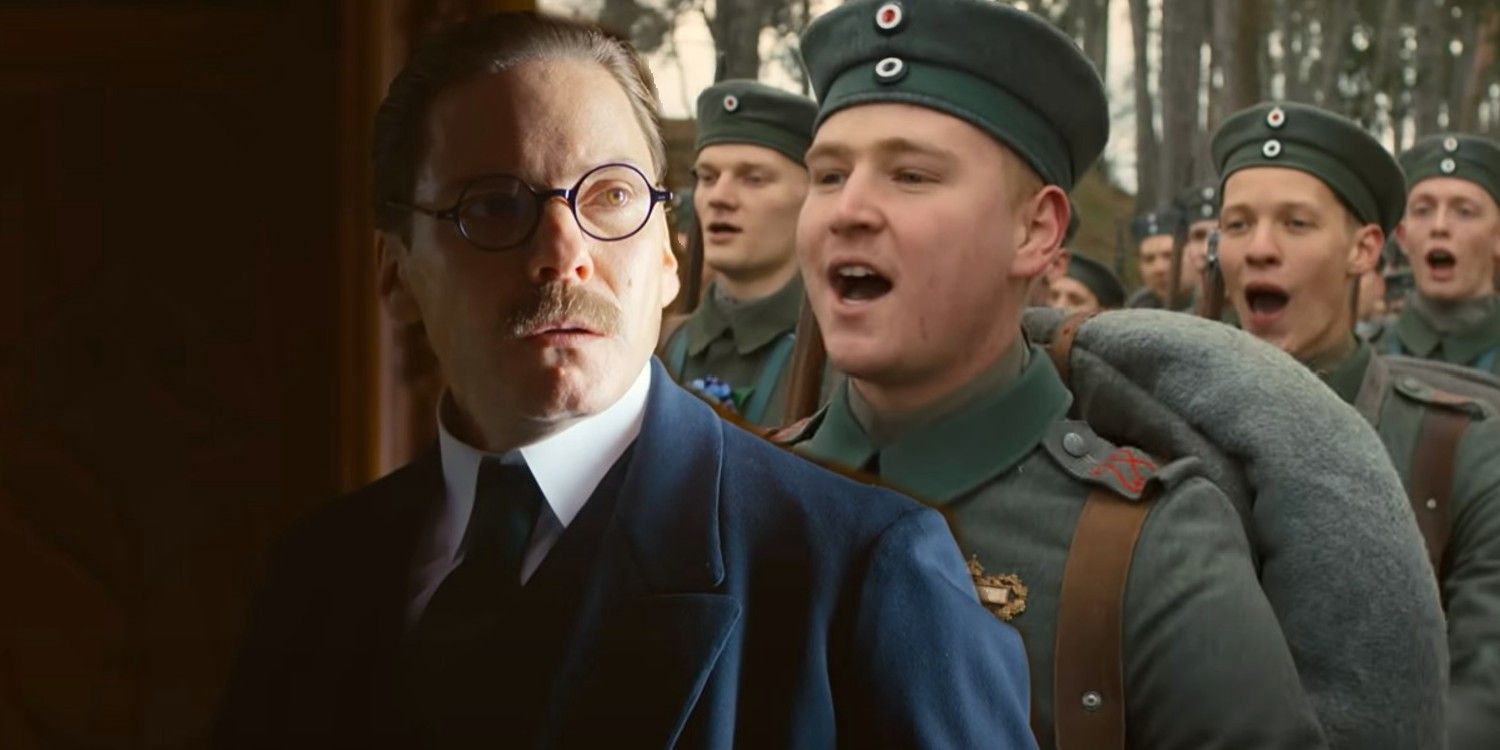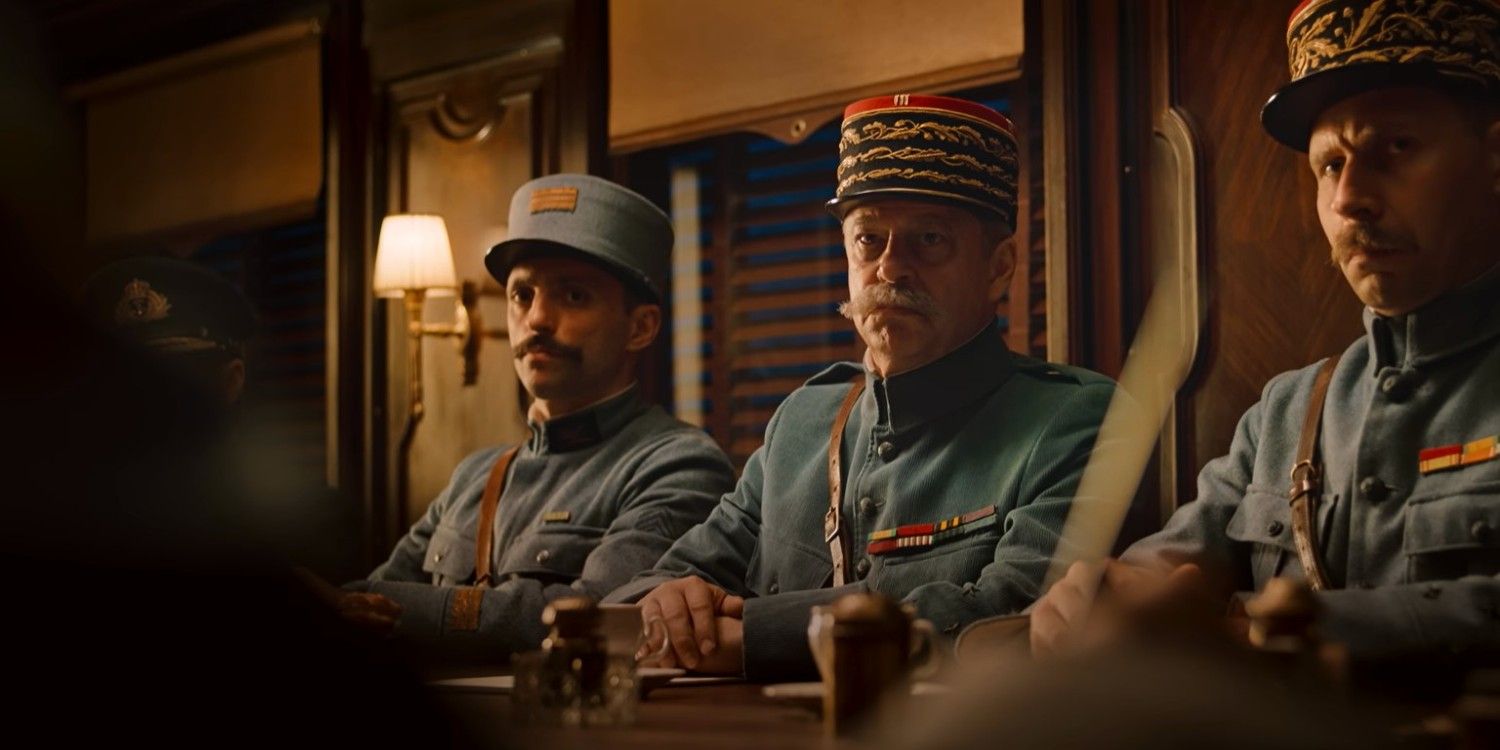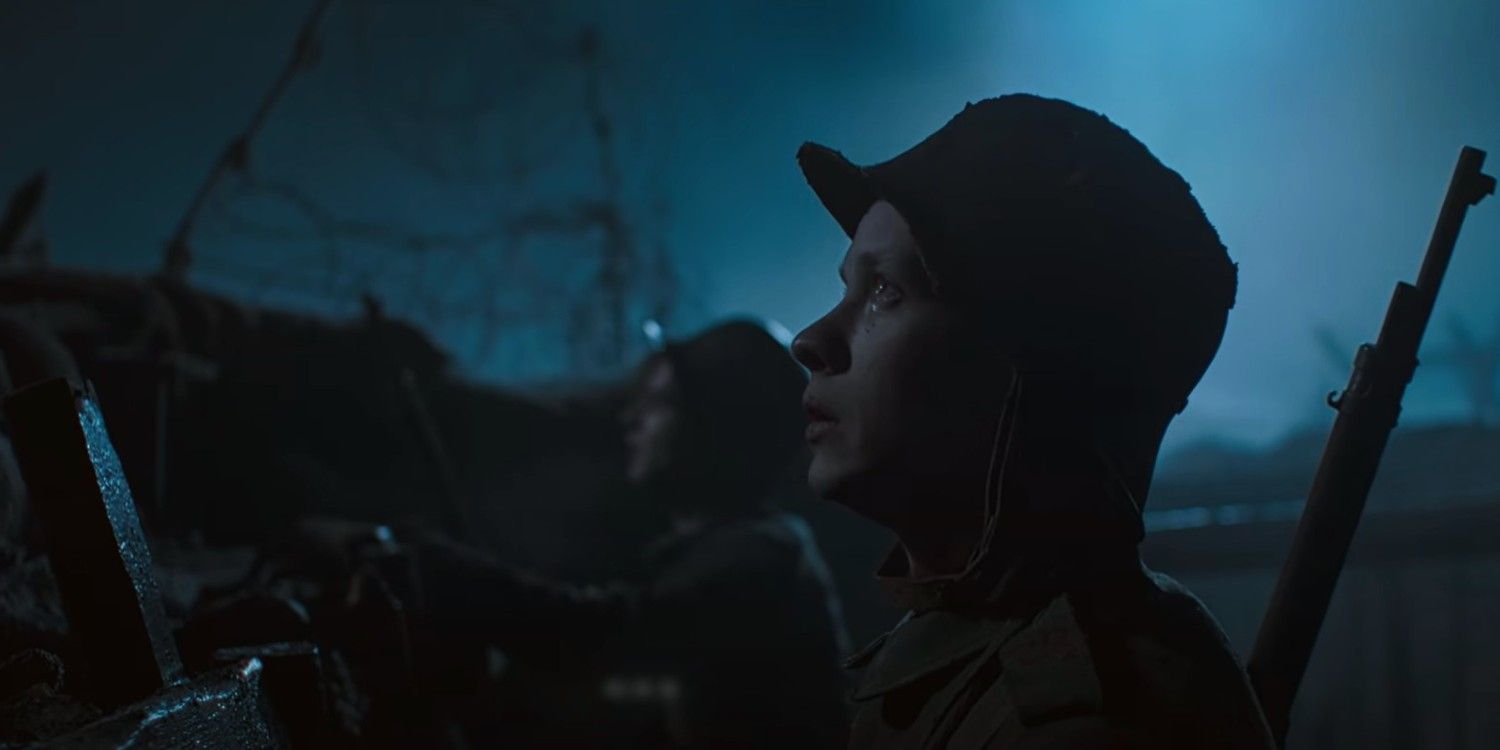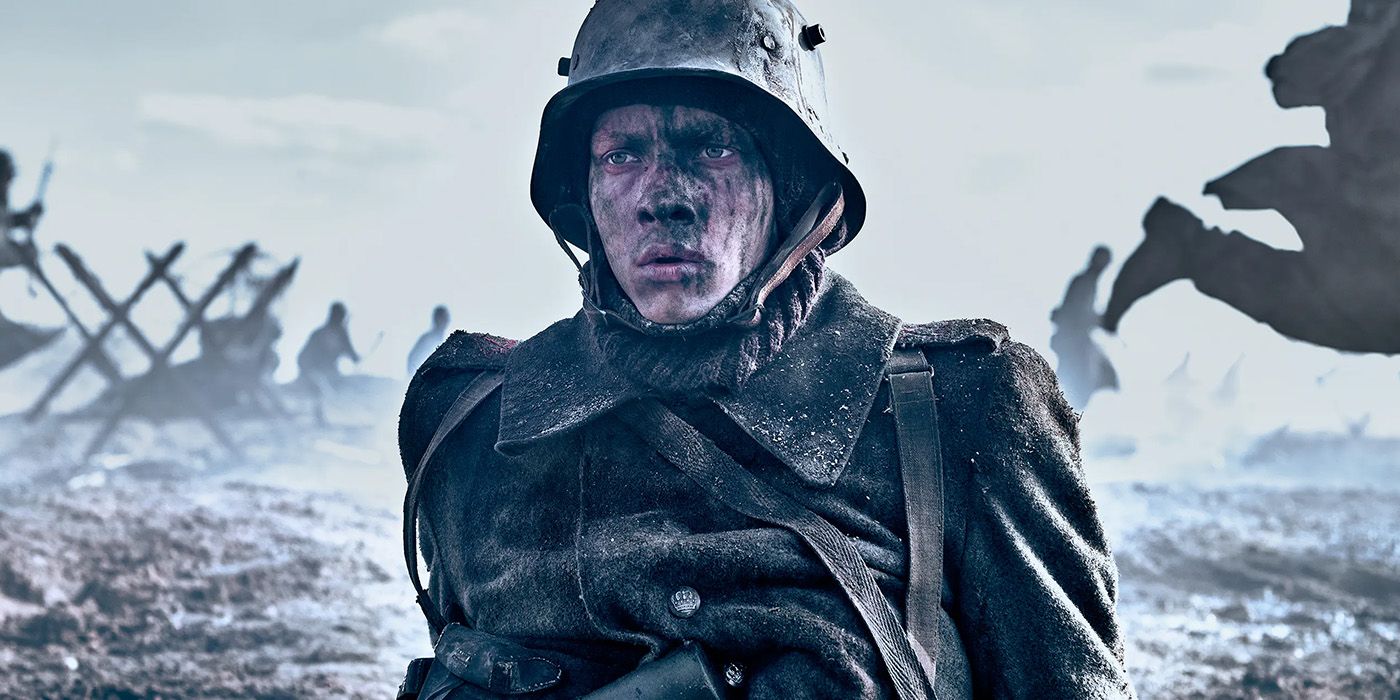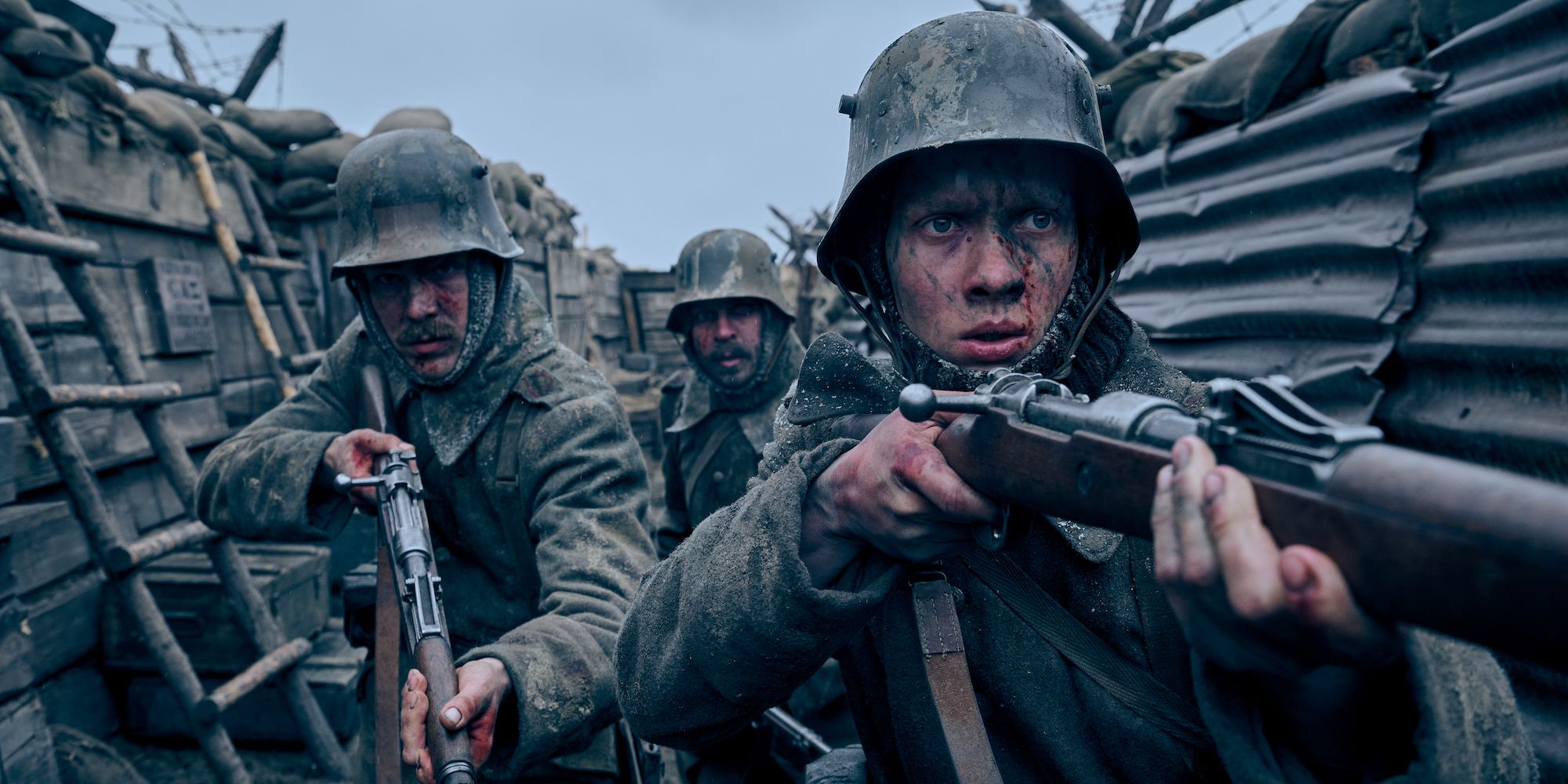Netflix’s All Quiet on the Western Front depicts the harrowing final two years of World War I, all the way up to its armistice and last WWI battle. Directed by Edward Berger, the film follows the story of Paul Bäumer (Felix Kammerer), a young German who becomes disillusioned with the war after he enlists and sees the true violence of the western front. At the same time, it chronicles German diplomat Matthias Erzberger (Daniel Brühl) and his efforts to bring the war to an end in the days leading up to the armistice.
The signing of the armistice and Paul Bäumer’s final battle all culminate in the third act of All Quiet on the Western Front, but both are more tragic than triumphant. After all, many Germans later saw the end of the war as a relinquishment, not an actual surrender, such as All Quiet on the Western Front's General Friedrichs. This attitude is exhibited in many of the commanders at the end of the film. This leads to the final battle of All Quiet on the Western Front depicting the consequences of the period after the armistice was signed, and the losses sustained during it. All Quiet on the Western Front's last WWI battle obviously hit home with viewers, as it received a total of nine Oscar nominations, including Best Picture and ended up winning Best International Feature Film.
Did Fighting In WW1 Continue After The Armistice Was Signed?
World War I officially ended with the last WWI battle — both in the movie and in real life — at 11 a.m. on November 11, 1918. However, there were several intervening days between the signing of the armistice and when it took effect to give time for the news of a cease-fire to reach all fronts of the conflict. As shown truthfully in All Quiet on the Western Front, the fighting did continue after the armistice was signed.
While some forces may not have realized the war was over until later, many commanders ordered their soldiers to continue fighting right up until the final minute, either to gain more territory before the battle lines officially froze or out of patriotic fervor. Supposedly, the last soldier to die in World War I was an American who charged the German lines after he was demoted for expressing anti-war sentiments in letters home.
What Was The Last Battle Of WW1? Is All Quiet On The Western Front Accurate?
Officially, the last WWI battle was the Battle of Mons, which occurred the day the armistice took effect. Canadian forces captured the Belgian town of Mons from German holdings, with the last "official" battle casualty being a Canadian soldier shot by a sniper. While this was the last official battle of World War I, fighting continued until the last possible moment, as the ending of All Quiet on the Western Front depicts. Between Mons and the last skirmishes along the western front, Joseph E. Persico’s book 11th Month, 11th Day, 11th Hour estimates that there were 10,944 deaths on the final day of the conflict.
The German soldiers trying to refuse to fight at the end of All Quiet on the Western Front is accurate as well, with soldiers on all sides of the conflict deserting and, on occasion, mutinying in the face of the losses they sustained on the battlefield. One of the turning points of the war in real life was the Kiel mutiny on November 3, 1918, in which German sailors triggered the revolution that would lead to a new government open to negotiating for peace.
All Quiet on the Western Front is unflinching in its accuracy with the last WWI battle as it explains how World War I ended long after 1917, dragging long after anyone thought it would. Even after the armistice, the movie shows how military leadership used the remaining wartime they had to continue the conflict to the last for small gains or out of a refusal to accept that they had lost. But as is also true in All Quiet on the Western Front, the regular infantrymen were more than ready for peace when it arrived.
How Many People Died Fighting In WW1 Before It Ended
The last WWI battle depicted in All Quiet on the Western Front along with its gripping wartime story certainly helped the film win its many 2023 Oscar nominations — but what of the reality of WWI? WWI is ranked as one of the deadliest conflicts in human history, with about 40 million civilians and soldiers, just like Paul Bäumer, dying in the process. All Quiet on the Western Front and its cast did a phenomenal job depicting the atrocities of World War I, which saw 6-13 million civilian casualties.
Somewhere between 9 and 11 million military personnel perished, with the Allies losing 6 million and the Central Powers losing 4 million. A staggering 2 million people died from disease, while another 6 million went missing and were presumed dead. At one point 6000 soldiers died per day — a huge number compared with modern military conflicts where even less than a dozen deaths can spark international outrage depending on the incident. All in all, All Quiet on the Western Front highlights the overwhelming tragedy and lives lost during one of the deadliest human conflicts of all time.
All Quiet On The Western Front's Battles Helped It Win Awards
The final battle of WWII depicted in the movie is a prime example of why All Quiet on the Western Front was such a hit during award season. The movie surprised many people with its eight Oscar nominations, including Best Picture. Though it missed out on the top prize, it did win four and its trophy for Best Cinematography is a showcase of the movie's astounding battle sequences. Such scenes can be very challenging to film with so many moving parts, yet All Quiet on the Western Front captures the bleak brutality of these moments with the way that it is shot.
There have been many war movies honored by the Oscars, from Platoon to Saving Private Ryan, and it is clear the Academy applauds seeing war depicted in a new way. While so movies have focused on the heroism at the center of battle, the determination of the soldiers, or the strategic victory of the fight, All Quiet on the Western Front throws audiences into the horrors of war. It is terrifying and chaotic with Paul and the other young soldiers looking scared instead of Hollywood's typical stoic heroes charging into battle. Above all else, All Quiet on the Western Front communicates the pointlessness of war with these battle sequences as they end without either side being able to call it a victory.

